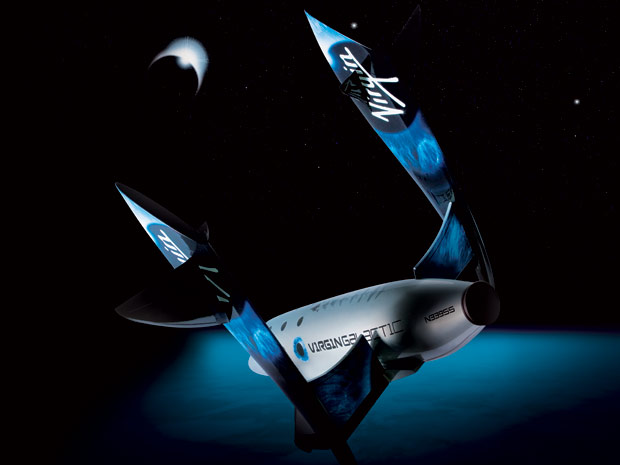Spaceship Two crash raises concerns about commercial human space flight, former NASA historian says
November 5, 2014

Spaceship Two feathered (credit: Virgin Galactic)
The crash of Virgin Galactic’s SpaceShip Two raises serious concerns about the future of commercial human spaceflight, including the imperatives of time and money that beset all who try to fly humans in space with existing technology,” according to a statement by Alex Roland, professor emeritus of history at Duke University and former NASA historian.
“Richard Branson has been famously secretive about the finances of Virgin Galactic, but it is undeniable that his problems have just grown ominously worse.
“At the minimum, Virgin Galactic will have to pay replacement costs for the lost SpaceShip Two, pay for the accident investigation, and pay increased costs for insurance, all of which will further delay the flights that might begin paying off the company’s sunk costs. This tragic accident casts a long shadow over the prospects for commercial, human spaceflight anytime soon.
“The special demands of flying humans safely, reliably and economically compound their challenges — not just to break even financially but to recover development costs and even generate a profit.”
Pilot error
“The U.S. National Transportation Safety Board (NTSB) recently revealed that a pilot onboard unlocked a component of the ship’s reentry mechanism — the feather system — earlier than it was meant to be,” IEEE Spectrum reports.
The feather system repoints the two tails vertically to slow the ship down during descent back to Earth.
“The ship’s protocol on Friday dictated that the feather system was to be unlocked at Mach 1.4. Copilot Michael Alsbury instead unlocked the system earlier, at Mach 1.0, and a second stage of deployment happened spontaneously, without command. Two seconds later, the ship violently broke apart.
“The NTSB has said the full crash analysis could take a year, so it will likely be a long time before we know what exactly caused the crash.”